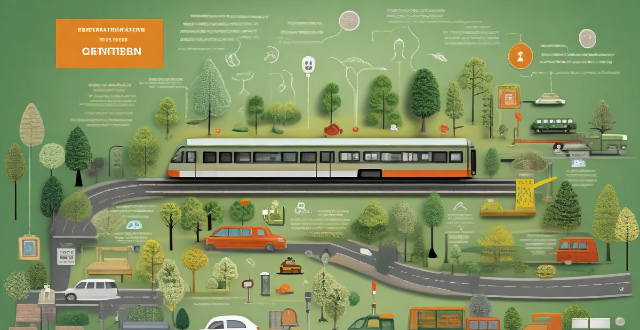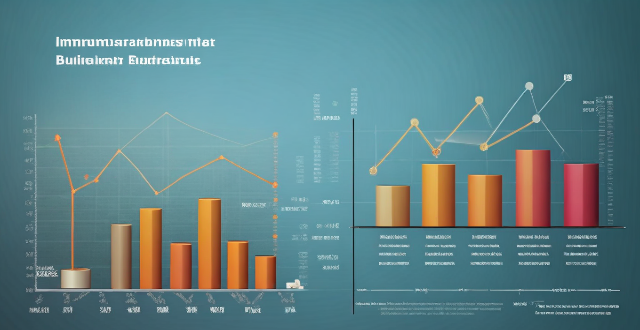Carbon Footprint

What role does renewable energy play in reducing carbon footprint ?
Renewable energy is crucial in reducing carbon footprint as it is obtained from natural resources and does not emit harmful greenhouse gases. It benefits the environment, economy, and society by mitigating climate change, reducing dependence on imported fuels, and providing affordable energy to remote areas. Solar, wind, hydro, geothermal, and biomass energy are types of renewable energy sources. However, challenges such as cost, intermittency, storage, and grid integration need to be addressed. Continued investment and innovation can make renewable energy more accessible and affordable for everyone.

What is a carbon footprint calculator and how does it work ?
A carbon footprint calculator is a tool that helps individuals, businesses, and organizations estimate their greenhouse gas emissions. It calculates the amount of CO2 and other greenhouse gases released into the atmosphere due to various activities such as driving, flying, using electricity, and consuming goods and services. The calculator collects data on these activities, applies emission factors based on scientific studies, adds up the emissions, and presents results along with recommendations for reducing the carbon footprint. Examples of carbon footprint calculators include individual, business, and product calculators. Using these tools can help individuals and organizations understand their environmental impact and take action to reduce it.

How can education contribute to reducing carbon footprint ?
Education plays a pivotal role in promoting environmental sustainability by raising awareness, encouraging sustainable practices, and empowering future leaders. It can contribute to reducing carbon footprints through curriculum integration, real-world examples, interdisciplinary projects, community outreach, media campaigns, partnership with NGOs, implementing green initiatives in schools, teaching practical skills, developing critical thinking, nurturing eco-advocacy, and preparing students for careers in environmental policy making. By focusing on these aspects, education can significantly contribute to reducing carbon footprints and paving the way for a more sustainable future.

What technologies are being developed to help reduce carbon footprint ?
The text discusses various technologies being developed to help reduce carbon footprint, including renewable energy sources such as solar, wind, hydro, and geothermal power; electric vehicles (EVs) with improving battery technology and charging infrastructure; energy efficiency through building design, appliance efficiency, and smart grids; carbon capture and storage (CCS); and nuclear power. These technologies aim to combat climate change by reducing greenhouse gas emissions and promoting sustainable practices.

Can reducing meat consumption lower my carbon footprint ?
Reducing meat consumption can lower your carbon footprint by decreasing the demand for livestock, which produces greenhouse gases and requires significant resources. This dietary change also conserves water and land, improves health, and supports a more sustainable food system.

How accurate are the results from a carbon footprint calculator ?
The accuracy of carbon footprint calculators can vary based on data sources, scope of calculation, user input, and methodology. Limitations include generalizations and lack of standardization. Despite these limitations, using reputable sources and understanding the scope can help users interpret results accurately. The goal is to raise awareness and encourage reductions in carbon emissions.

How do energy-efficient appliances help decrease carbon footprints ?
Energy-efficient appliances contribute to a smaller carbon footprint by reducing energy consumption, improving efficiency, and having a longer lifespan. Government incentives encourage the adoption of these eco-friendly options, leading to lower energy bills, increased comfort, environmental sustainability, reduced maintenance costs, and enhanced property value. Examples of energy-efficient appliances include refrigerators, washing machines, air conditioners, light bulbs, and water heaters. By choosing energy-efficient appliances, we can all contribute to a greener planet and a healthier future for generations to come.

What are the legal obligations for companies regarding their carbon footprint ?
Companies face various legal obligations concerning their carbon footprint aimed at reducing greenhouse gas emissions and mitigating climate change. These include mandatory and voluntary emissions reporting, regulatory compliance through emissions caps and permitting, corporate governance measures like board oversight and stakeholder engagement, financial responsibilities such as carbon taxes and trading schemes, commitments under international agreements, and potential civil liabilities for negligence or human rights violations related to pollution. Companies must take proactive steps to reduce emissions, engage stakeholders, and contribute positively to global climate action, with specific requirements depending on the jurisdiction, industry, and individual company's commitments.

What is a carbon footprint ?
A carbon footprint is a measure of the impact on the environment in terms of greenhouse gases produced. It includes direct and indirect emissions from activities like driving, electricity consumption, and food production. Reducing one's carbon footprint is crucial for combating climate change and promoting sustainability. Ways to do so include using public transit, energy-efficient appliances, eating locally grown food, and proper waste management.

How can I calculate my personal carbon footprint ?
This article provides a detailed guide on how to calculate your personal carbon footprint, which is the total amount of greenhouse gases released into the atmosphere as a result of your activities. It explains what a carbon footprint is, the importance of calculating it, and the steps involved in doing so. The steps include gathering information about your lifestyle habits, using online carbon footprint calculators, breaking down your emissions by category, identifying areas for improvement, setting goals, and tracking progress. The article emphasizes that taking action to reduce your carbon footprint is crucial for a healthier planet.

How does transportation affect our carbon footprint ?
Transportation's Impact on Our Carbon Footprint explores how different modes of transportation contribute to greenhouse gas emissions. It highlights the significance of air travel and cars as major sources of CO2 emissions, while also discussing the benefits of public transit, cycling, and walking. The text emphasizes the importance of vehicle efficiency, alternative fuels, and urban planning in reducing carbon footprint. It suggests strategies such as reducing air travel, driving less, choosing efficient vehicles, and supporting green infrastructure to mitigate transportation's impact on the environment.

How does reducing carbon footprint impact climate change ?
Reducing our carbon footprint is essential to mitigate climate change. It involves decreasing greenhouse gas emissions from activities like energy use and transportation. Direct effects include reduced fossil fuel consumption, improved energy efficiency, and increased carbon sinks through afforestation. Indirectly, it influences policy, drives economic changes, and promotes social awareness. Overall, reducing the carbon footprint leads to a sustainable culture, slowing down climate change.

What are the benefits of reducing carbon footprint ?
The benefits of reducing carbon footprint include mitigating climate change by lowering greenhouse gas emissions, preserving natural resources and biodiversity, improving air and water quality, saving money on energy bills, creating jobs in the renewable energy sector, enhancing corporate image, promoting social equity by reducing pollution-related illnesses and improving access to renewable energy. To measure and reduce carbon footprint, individuals can use online calculators, set reduction goals, and implement changes in transportation, energy use, food choices, and waste management.

What are the main contributors to a carbon footprint ?
A carbon footprint is the total amount of greenhouse gases (primarily carbon dioxide) that are emitted as a result of an individual's, organization's, or product's activities. The main contributors to a carbon footprint can be broadly categorized into three sectors: household consumption, transportation, and production of goods and services. In summary, understanding these main contributors to a carbon footprint allows individuals and organizations to make more informed decisions about their consumption habits and operational practices to reduce their environmental impact.

How can governments help in reducing carbon footprint ?
Governments can help reduce carbon footprint by implementing green policies, investing in renewable energy, encouraging public transportation, educating the public, and partnering with businesses.

How can individuals reduce their carbon footprint ?
Reducing your carbon footprint is crucial for mitigating climate change. Individuals can contribute by adopting practices in transportation, home energy use, food consumption, waste management, water conservation, shopping habits, and advocacy and education. These include using public transport or electric vehicles, walking or cycling short distances, using energy-efficient appliances, insulating homes, eating plant-based diets, buying local and reducing food waste, recycling and composting, fixing leaks, supporting sustainable policies, and educating others.

What are the environmental benefits of using a CHEV ?
The text discusses the environmental benefits of using a CHEV (Compound Hybrid Electric Vehicle), which includes reduced greenhouse gas emissions, improved fuel efficiency, lower carbon footprint, conservation of natural resources, and reduced noise pollution. CHEVs combine the powertrains of an internal combustion engine and an electric motor, resulting in fewer emissions and lower fuel consumption compared to traditional gasoline-powered vehicles. They also have regenerative braking systems that capture energy from braking and convert it into electricity for storage in the battery, further improving their overall fuel efficiency. By choosing a CHEV over a conventional vehicle, individuals can reduce their personal carbon footprint and help mitigate the effects of climate change.

How can I find a reliable carbon footprint calculator online ?
Finding a reliable carbon footprint calculator online can be a daunting task, but with the right approach, you can easily find one that suits your needs. Here are some tips on how to do it: 1. Do your research 2. Check credibility 3. Look for transparency 4. Consider customization options 5. Evaluate usability

How can we reduce our carbon footprint ?
Reducing our carbon footprint is crucial for mitigating the impacts of climate change. Here are some ways we can do so: 1. Use Renewable Energy Sources 2. Conserve Energy at Home 3. Reduce Water Consumption 4. Change Transportation Habits 5. Adopt Sustainable Practices 6. Make Eco-Friendly Choices 7. Educate and Advocate

How can sports organizations reduce their carbon footprint ?
Sports organizations can reduce their carbon footprint by adopting sustainable practices and promoting environmental awareness through strategies such as energy efficiency, waste management, sustainable transportation, water conservation, responsible food and beverage choices, education and awareness initiatives, and organizing green events. By implementing these measures, they can set an example for other industries to pursue a more sustainable future.

Can using a carbon footprint calculator help reduce my environmental impact ?
Using a carbon footprint calculator can help individuals reduce their environmental impact by raising awareness, identifying areas for improvement, setting goals, tracking progress, and encouraging sustainable habits.

What are the challenges in reducing carbon footprint globally ?
Reducing carbon footprint globally is a multifaceted challenge that requires collaborative efforts from governments, businesses, and individuals. Key challenges include economic factors like the cost of renewable energy and job losses in fossil fuel industries; technological barriers such as energy storage and CCS; policy and regulatory issues including lack of international cooperation and inadequate enforcement; social and cultural factors like public awareness and cultural practices; natural resource constraints such as access to renewable resources and deforestation; and infrastructure changes needed in transportation systems and building efficiency. Addressing these challenges requires a combination of policy initiatives, technological innovations, educational programs, and international cooperation to achieve a sustainable future with reduced carbon footprints worldwide.

How do energy-efficient buildings reduce carbon footprint ?
Energy-efficient buildings are crucial for reducing carbon footprint by minimizing energy use and optimizing resources. They incorporate features like proper insulation, air tightness, advanced HVAC systems, renewable energy sources, and smart technology to reduce energy consumption, lower greenhouse gas emissions, and mitigate climate change impact. These structures offer benefits such as lower utility bills, increased comfort, reduced maintenance costs, and higher resale value. Energy-efficient buildings play a significant role in combating climate change and promoting a sustainable future.

Are there any drawbacks or limitations to using a carbon footprint calculator ?
The text discusses the drawbacks and limitations of using carbon footprint calculators. These include issues with data accuracy, scope of coverage, user bias, lack of personalization, generalization, complexity, motivation, and cost. While these calculators can be helpful in reducing environmental impact, it is important to recognize their limitations and make informed decisions about their use.

What factors do carbon footprint calculators typically consider when calculating emissions ?
Carbon footprint calculators estimate the greenhouse gas emissions from personal lifestyle, organizational activities, and product lifecycles. Key factors include housing energy use, transportation, diet, waste management, operational energy, business travel, supply chain impacts, employee commuting, raw material extraction, manufacturing processes, distribution logistics, product use, and disposal methods. Additional considerations might involve water consumption, land use, and consumer goods production. Accurate estimation requires comprehensive data across these categories to identify emission reduction opportunities and support climate change mitigation efforts.

How often should I use a carbon footprint calculator to track my progress ?
The article discusses the importance of tracking one's carbon footprint and how a carbon footprint calculator can be used to measure progress in reducing it. It suggests starting with an initial assessment, then checking monthly for changes, quarterly reviews for trends, and annual reassessments to evaluate overall progress. Key areas to focus on include transportation, energy consumption, dietary choices, and waste management. Regular use of a carbon footprint calculator is essential for leading a more sustainable life.

How can we reduce our carbon footprint to mitigate climate change ?
The text discusses ways to reduce carbon footprints to mitigate climate change. It suggests switching to public transportation or carpooling, using renewable energy sources, eating less meat and dairy, reducing waste through reuse and recycling, conserving water, and supporting policies and initiatives.

How does carbon offsetting work ?
Carbon offsetting works by assessing emissions, identifying suitable offsetting projects like renewable energy or reforestation, purchasing carbon credits from these projects, and continuously monitoring their effectiveness. This process helps reduce the overall carbon footprint of individuals or organizations while contributing to global efforts to combat climate change.

How can individuals reduce their carbon footprint in their daily life ?
Individuals can reduce their carbon footprint by adopting eco-friendly habits in transportation, home energy use, consumption habits, dietary choices, and advocacy. They can opt for public transit, carpooling, cycling, walking, or electric vehicles; use energy-efficient appliances, LED bulbs, and adjust thermostat settings; reduce, reuse, recycle items, support eco-friendly brands, buy local produce, and conserve water; incorporate plant-based meals, reduce food waste, and compost scraps; educate others and support green initiatives.

Why is it important to use a carbon footprint calculator for individuals and businesses ?
The importance of using a carbon footprint calculator is highlighted for individuals and businesses. For individuals, it helps in understanding personal impact, raising awareness, motivating behavior change, setting goals, and contributing to global efforts. For businesses, it aids in corporate responsibility, cost savings, compliance and reporting, enhancing brand image, stakeholder engagement, risk management, and innovation. Using a calculator empowers both to make informed decisions for a sustainable future.